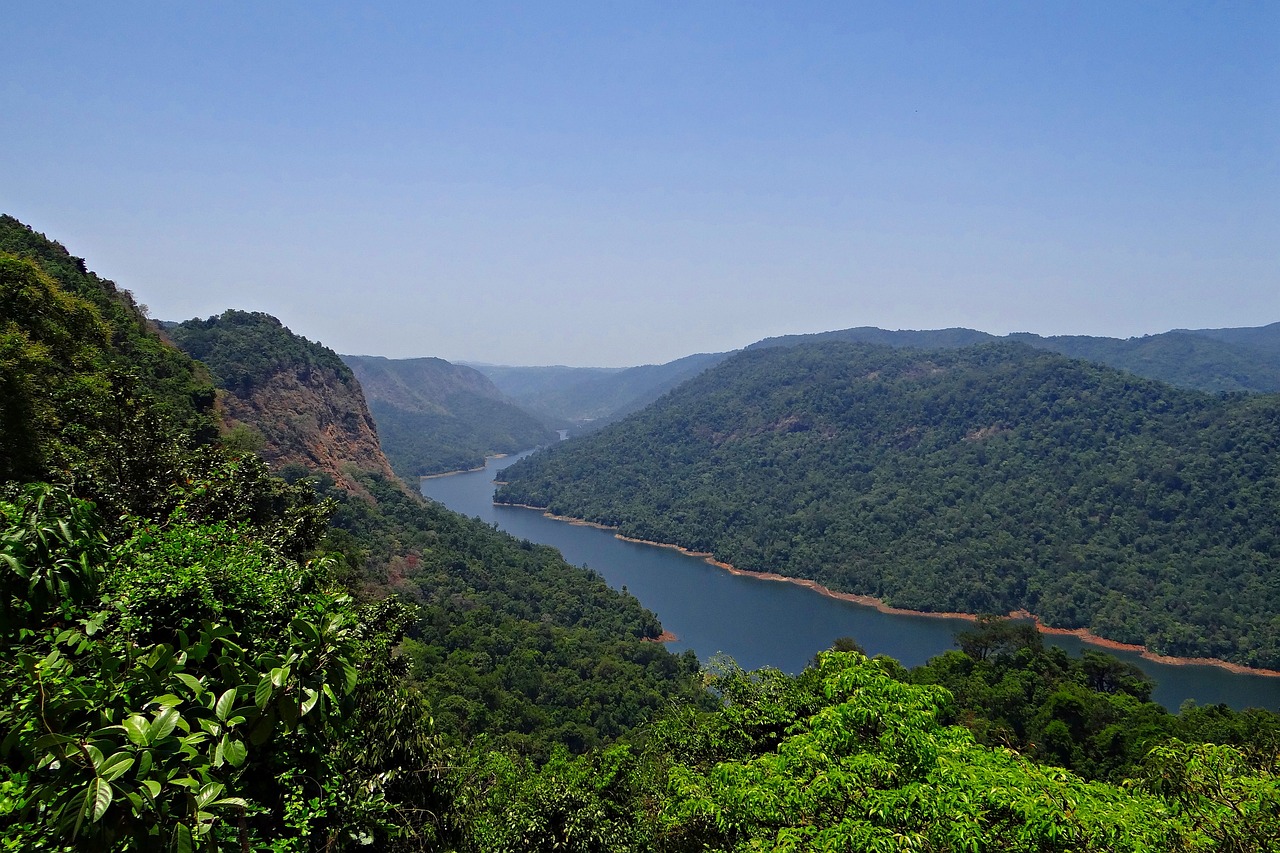
What is the Western Ghats?
The Western Ghats, located in the southern region of India, are a series of rugged mountains that run parallel to the Indian coastline. The Ghats form a natural boundary between the Deccan Plateau and the more humid and tropical Western Ghats. The Western Ghats extend for about 1,200 miles from north to south and about 500 miles from east to west.
The mountains are composed of metamorphic rocks that were formed over millions of years. These rocks were originally deposited on the floor of an ancient ocean. As the ocean receded, these rocks were thrust up and onto the continental shelf. Over time, erosion and plate tectonics have shaped these mountains into their present-day form.
The Western Ghats are home to a wide range of flora and fauna. Some of the most popular attractions include tea plantations, waterfalls, caves, wildlife sanctuaries, and beaches. During monsoon season (from June to September), the Western Ghats turn into a paradise for nature lovers who want to witness spectacular rainfall ceremonies
Why Should I Visit the Western Ghats?
The Western Ghats, located in the southernmost part of India, are home to some of India’s most beautiful natural landscapes. The hills are blanketed in green all year round, thanks to the heavy rainfall that falls throughout the monsoon season. The best time to visit the Western Ghats is during the monsoon season (July-September), when the hills are at their greenest and most scenic.
The Western Ghats are also home to some of India’s most iconic tourist attractions, including Kerala’s backwaters, Munnar National Park, and Aravalli Mountains. Each of these destinations has its own unique charms that make them worth visiting no matter what time of year you choose to go.
How to Reach the Western Ghats?
If you’re looking for an escape from the city, the enchanting Western Ghats are a great option. The mountains range from 1,000 to 4,000 feet in height and offer breathtaking views of rainforest, tea plantations, and misty valleys. There are plenty of ways to experience the Western Ghats during monsoon season:
Take a hike: The Western Ghats are home to some of India’s most scenic trails, perfect for hiking or biking. Head to Munnar in Kerala for breathtaking views of tea plantations and rainforest, or try Sagar National Park in Gujarat for a more challenging trail experience.
Take a ride: If hiking isn’t your thing, consider taking a ride on one of the many thrilling mountain roads that wind through the hills. Or try white water rafting or kayaking on some of India’s major rivers like Mahanadi or Godavari.
Staycation: If you’re looking for an easy way to enjoy all that the Western Ghats have to offer without leaving the comfort of your own home, check out some of India’s top holiday resorts like Kovalam in Tamil Nadu or Kodaikanal in Tamil Nadu. These resorts offer everything from beautiful beaches and lazy days by the pool to exciting activities like golf or horseback riding.
What to Expect on a Trip to the Western Ghats During Monsoon Season
When traveling to the Western Ghats during monsoon season, expect heavy rains and thunderstorms. Be prepared for slippery roads, flooded areas, and lightning strikes. Dress appropriately for the weather and carry an emergency kit including a flashlight, first-aid supplies, and clothing appropriate for rain and mud. While in the Western Ghats be sure to visit some of India’s most beautiful temples and hike through lush forests full of wildlife.
What to Do in the Western Ghats During Monsoon Season
If you’re looking for a scenic escape from the everyday, the Western Ghats are the place to go. This mountain range spans across Karnataka and Kerala states in southern India, and during monsoon season, it’s a captivating wonderland of waterfalls, misty forests, and lush fields. Here are some tips on what to do when visiting the Western Ghats during monsoon season:
- Start your journey in Bangalore or Mysore. These cities are located in the heart of the Western Ghats and are easy to get to by train or bus. Once you’re there, consider exploring nearby Hampi, an ancient Hindu city that is still largely preserved and inhabited. Or head out into the surrounding countryside for hikes, bike rides, or wildlife spotting.
- Plan your visits ahead of time so you can take advantage of the region’s many attractions – including waterfalls like Bagalkot Falls and Kanakagiri Falls, dense jungles like Yercaud National Park, and rolling hills covered in tea plantations. Make sure to book tickets in advance if you want to visit popular spots like Pinnacles National Park or Kovalam Beach Resort.
- If you want to stay put while enjoying all that nature has to offer, consider staying at one of the region’s many charming guesthouses or homestays. In addition to providing excellent accommodation at very reasonable rates, these places often
Conclusion
If you’re looking for an amazing destination to explore during monsoon season, the Western Ghats are a perfect choice. The range of landscapes that can be found in this area – from dense jungles to dizzying heights – is simply breathtaking. It’s also worth noting that the Western Ghats are home to some of the most diverse wildlife on Earth, so if hiking and camping are your thing then this region is definitely for you. Just remember to pack your rain gear and prepare yourself for one of the most memorable travel experiences you’ll ever have!






